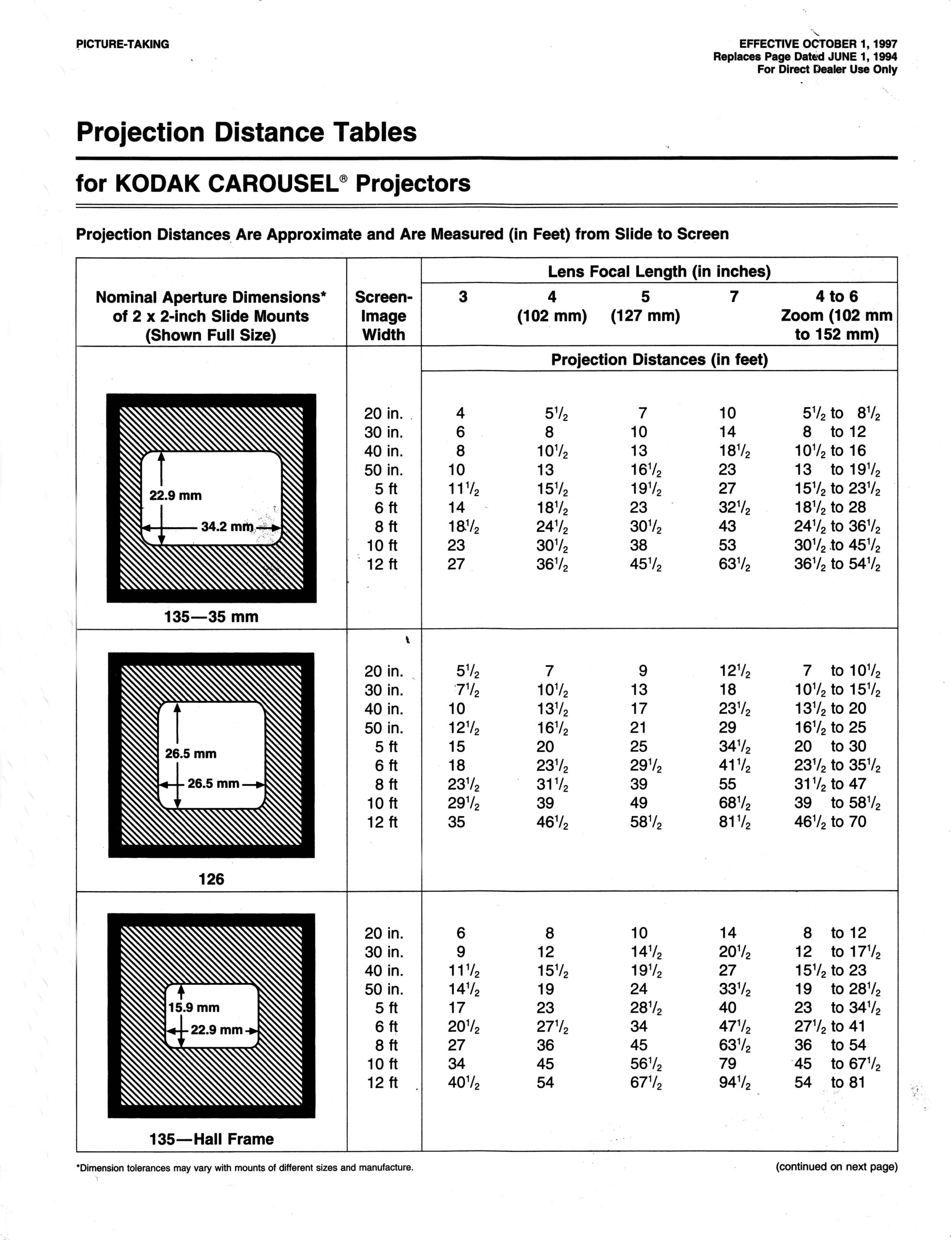Slide Projection Distance Tables
Slide Projection Distance Tables for 2 x 2 Slide Mounts | 35mm | 110 | 126 | Wide Format | 828 | 2 1/4 x 2 1/4
Since film camera use in on the rise, manufacturers have started production of several popular print and slide films.
We have many requests for projection distances.
I hope this information provided to me by Eastman Kodak will help. Most of the popular slide formats are listed. PDF file is also available free.
I Always Enjoying Most Everything Using Film
Gray
USCamera Since 1998 | Vintage Service Parts for Film Cameras, Lenses | Foam Light Seal Kits | Owner – Service Manuals Part Lists and Much More








